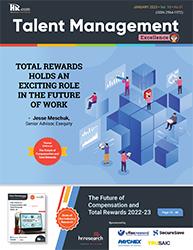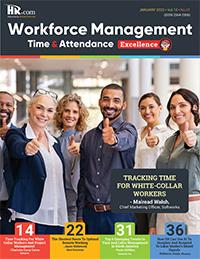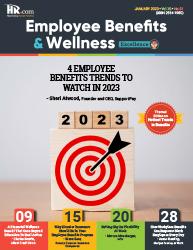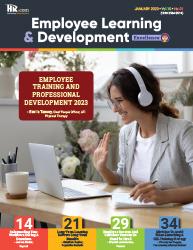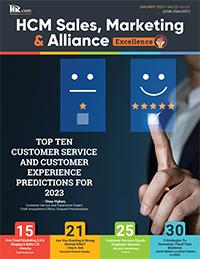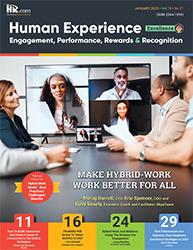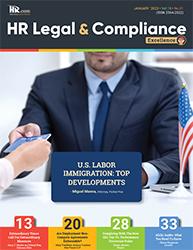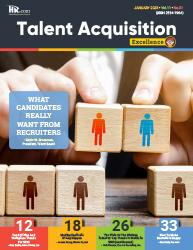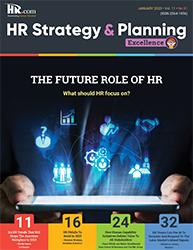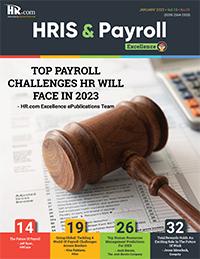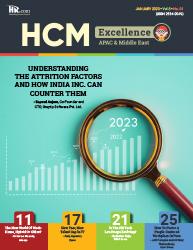






Protect Your Business: How To Avoid Losing Out On Attorney-Client Privilege
Top 10 ways to safeguard privilege
- Christine Lamb, Partner, Fortis Law PartnersThe Tactics That Temper Burnout: HR Strategies To Boost Employee Productivity
Insights and solutions for employers to mitigate employee burnout
-
Jeff Williams, Vice President, PaychexEmerging tools and platforms HR professionals can utilize to optimize their workplace



- Lexi Jones, Chief People Officer, OfficeSpace
The Modern Workplace: Embracing Remote Work

Reimagining traditional systems
-
Kristen Dooley, Chief People Officer, MotusThis monthly interactive learning experience showcases activities, processes, and tools needed to manage a workforce.
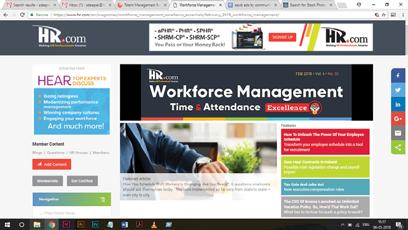
Virtual Events in the Workforce Management encompasses all the activities, processes, and tools needed to manage a workforce. A comprehensive WFM system includes planning, forecasting, scheduling, and tracking workers to optimize the balance of customer, employee, labour laws and organizational needs. Be informed and understand the latest WFM trends through Workforce Management Virtual Events. Each Virtual Event consists of up to 10 credit webcasts.

HR.com webcasts deliver the latest Workforce Management industry news, research trends, best practices and case studies directly to your desktop. Webcasts are available live online with a downloadable podcast and a copy of the slides (PDF) available before and after each webcast. Earn all of the required recertification credits for aPHR, PHR, SPHR, GPHR, and SHRM Certifications. HR.com’s one-hour webcasts, in every HR specialty including HRIS and Payroll, are pre-approved for HRCI and SHRM credit (excluding Demo webcasts).
Join almost 21,700 HR.com members with a similar interest and focus on rewards and recognition. Share content and download research reports, blogs, and articles, network, and “follow” peers and have them “follow” you in a social network platform to communicate regularly and stay on top of the latest updates. This well established Workforce Management Community is an invaluable resource for any HR professional or manager.
Our mission is to promote personal and professional development based on constructive values, sound ethics, and timeless principles.
Excellence Publications
Debbie McGrath

CEO, HR.com - Publisher
Sue Kelley Director (Product, Marketing, and Research)
Babitha Balakrishnan and Deepa Damodaran Excellence Publications Managers and Editors
Deepak S Senior - Design and Layout
Workforce Management, Time & Attendance, Excellence Team
Deepa Damodaran Editor
Koushik Bharadhwaj Junior Editor Chinnavel Design and Layout (Digital Magazine)
Vibha Kini Magazine (Online Version)
Submissions & Correspondence
Please send any correspondence, articles, letters to the editor, and requests to reprint, republish, or excerpt articles to ePubEditors@hr.com
For customer service, or information on products and services, call 1-877-472-6648
Workforce Management, Time & Attendance, Excellence (ISSN 2564-2006) is published monthly by HR.com Limited, 56 Malone Road, Jacksons Point, Ontario L0E 1L0
Internet Address: www.hr.com
Debbie Mcgrath Publisher, HR.comAfterthe emergence of Covid-19, remote work has significantly amplified the possibilities for individuals to work from any location worldwide. Consequently, some people have taken the chance to diversify their income streams by offering their expertise on a project or part-time basis as independent contractors. However, not all managers are fully prepared for this shift.
Having been accustomed to managing full-time staff, they are uncertain about how to effectively work with freelancers. After all, managing individuals who are not official employees or traditional vendors can be challenging, and the boundaries may not be entirely clear.
Given this common concern, it becomes crucial for HR leaders to provide training within their organizations to cultivate healthy and productive relationships with high-quality contractors.
While worker classification rules may differ from one state or country to another, the fundamental principles for successful collaboration with freelancers remain universal. It all begins with recognizing the primary pain point of independent contracting - uncertainty.
In an insightful article titled "5 Ways To Build Productive Relationships With Independent Contractors," Katherine Loranger from Safeguard Global lays down the key strategies to effectively engage with contractors.
To many, who are well into their careers, the word “work” brings visions of a morning commute, occasional trips to the workplace kitchen for coffee, and a long day in the office. However,
Deepa Damodaran Editor, Workforce Management, Time & Attendance, Excellence
today the comfort, flexibility, and desirability of remote work have changed the work experience. Read The Modern Workplace: Embracing Remote Work, where Kristen Dooley from Motus will help us understand why traditional work culture is transforming.
A smart selection of HR technology can make businesses more efficient and profitable. Whether your goals are to improve talent acquisition and retention, build culture, facilitate learning and development, or increase transparency in the hybrid workplace, deploying great technology is a powerful way people operations teams can unlock potential in the business. OfficeSpace's Lexi Jones, in her article The Tech Hyping Up Hybrid Teams touches upon why embracing cost-effective HR tech tools is helping businesses not only to address but also solve their biggest workplace challenges.
Also, read Protect Your Business: How To Avoid Losing Out On Attorney-Client Privilege and The Tactics That Temper Burnout: HR Strategies To Boost Employee Productivity, among others.
In brief, this edition of Workforce Management, Time & Attendance, Excellence features informative articles penned by eminent WFM experts. And, we hope, their insights will assist you in achieving excellence and efficiency in your workforce management efforts.
Happy Reading!
In a world of unparalleled challenges (global pandemic, racial injustice, political rivalry, digital 4.0, emotional malaise), uncertainty reigns. Finding opportunity in this context requires harnessing uncertainty and harnessing starts with reliable, valid, timely, and useful information. The Excellence publications are a superb source of such information. The authors provide insights with impact that will guide thought and action.
Dave Ulrich
Excellence publications are my ‘go-to’ resource for contemporary and actionable information to improve leadership, engagement, results, and retention. Each edition offers rich and diverse perspectives for improving the employee experience and the workplace in general.
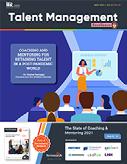


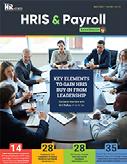
 Julie Winkle Giulioni Author, Virtual /Live Keynote Presenter, Inc.’s Top 100 Leadership Speakers
Julie Winkle Giulioni Author, Virtual /Live Keynote Presenter, Inc.’s Top 100 Leadership Speakers


I regularly read and contribute to Leadership Excellence and Talent Management Excellence. I use many of the articles I read to augment my own presentations and I often share the articles with my clients. They are always quick, right on target for the latest issues in my field, and appreciated by my clients. If you want to stay up to date on the latest HR trends, choose a few of the different issues from the Excellence series of publications.
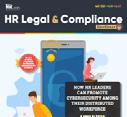
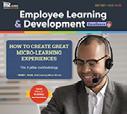
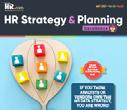
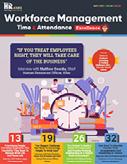
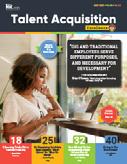

We’re eager to hear your feedback on our magazines. Let us know your thoughts at ePubEditors@hr.com
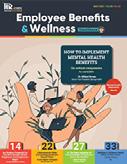
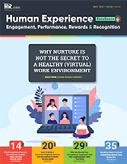 Rensis Likert Professor, Ross School of Business, University of Michigan Partner, The RBL Group
Rensis Likert Professor, Ross School of Business, University of Michigan Partner, The RBL Group

Facing a potential recession, human resources (HR) leaders want agility in their workforce, and at least 60 million Americans are happy to provide it. That is the number of people who freelance in the U.S., according to Upwork’s 2022 Freelance Forward survey
Freelancers and independent contractors now account for 39% of the U.S. workforce and have transformed the makeup of companies. A recent survey found that the proportion of freelancers to employees at the average U.S. firm increased from 1:10 in 2019 to almost 1:5 in 2022.
Following Covid-19, remote work supercharged the opportunity for people to work from anywhere in the world, and as a result, for some, the opportunity to diversify their revenue streams by offering their expertise on a project or a part-time basis as independent contractors. However, not all managers feel ready for this shift. Accustomed to full-time staff, they are not sure how hard they can lean on freelancers. After all, what are the boundaries for managing people who are not quite employees or conventional vendors?
Given this common concern, it is important for HR leaders to train their organizations to create healthy, productive relationships with top-quality contractors. Friendly disclaimer: worker classification rules vary across states and countries. However, the principles for working successfully with freelancers are universal. It begins with understanding the greatest pain point of independent contracting - uncertainty.
Life is uncertain, and freelancers feel that uncertainty more acutely than most. Their income depends on building a predictable pipeline of work. Dead periods are terrifying, and bottlenecks can be immensely stressful for a solopreneur. The freelancer wants to know how much work is coming, when it is due, and what it will pay. Employers want predictability tooknowing the freelancer’s output, deadlines, and costs. That leads to three potential friction points, all related to uncertainty.
Freelance work is based on projects, and payment is contingent on outcomes. Sometimes the outcome is a clear deliverable, like a two-minute explainer video. Sometimes the outcome is a service-level agreement (SLA), such as maintaining a certain response time for IT tickets. Sometimes it is a KPI (key performing indicator), like achieving a target cost per acquisition in a marketing campaign. Miscommunication about our ill-defined outcomes can mean the freelancer is not paid or that a company does not get what is needed.
Remember that freelancers are not full-time employees. They eat, sleep, raise families, and have a life outside of their projects, just as employees do after their workday. They also juggle multiple clients and projects. Freelancers have choices about who to serve and how to prioritize clients. For most, the flexibility to do their work based on how it best serves their lives is a big reason why they prefer freelance work. Companies that habitually create chaos and uncertainty with last-minute requests and rushed assignments will make it hard for freelancers to ensure the balance within that flexibility – as a result, those companies will struggle to retain freelancers.
Third, freelancers vary in their work identities. Some view themselves as business owners. Others present themselves as an extension of your team and happily join your Slack channel. Uncertainty around this can lead to unspoken tension and awkwardness.

The key to addressing these uncertainties is to engage freelancers on a basis of mutual respect, transparency, and trust. In practice, that means:
As you know, the onboarding process contributes to a successful acclimation to a company, team, and work. With freelancers, while the worker classification may differ, the onboarding process of a contractor also needs to be a defined, uniform process that welcomes them into the organization and ensures all the required paperwork, contracts, and resources needed to ensure they are set up to start their work as well. Tell the contractor what you will need — a W-9, SOW (statement of work), billing information, contract, etc . —to get rolling. If the contractor is based abroad, get expert help with compliance, payroll, taxes, etc. For big bonus points, pay your freelancers on time while minimizing their transaction fees (i.e., use direct deposit).
A perpetual challenge for freelancers is getting the information they need to do their job. Typically, freelancers want the freedom to email, IM, and speak directly with whoever’s knowledge and expectations matter most. That could be their manager, but that could also be executives, subject matter experts, and others. An experienced freelancer knows what they need to ask and discuss to achieve great results. Providing access creates efficiency and communicates that you trust the freelancer.
Is this a Slack, Teams, or email company? Do people offer a selection of meeting times or fire off a calendar invitation and hope it works? Can they call someone without notice, or should calls be scheduled? How do teams decide and indicate that a project is “complete”? Discuss these norms and best practices for team and company etiquette with new contractors. Maybe share a one-page guide on how things get done with the team or company and what your culture is like.
Essentially, help the contractor understand how to serve you best. That means providing requirements, necessary information, and clear guidelines. For a piece of content, that stack might include a creative brief, introductions to interview subjects and brand guidelines. In turn, you might ask the freelancer for a proposed timeline and price estimate. Is this a oneoff, a monthly project, or an annual thing? Be clear about that too.
Freelancers need candid feedback to meet expectations. For long-term projects, have regular check-ins and critique deliverables throughout the process so contractors can recalibrate, if necessary, and avoid redoing everything later. Also, ask the contractor how the work is going. What unexpected roadblocks have they hit? What questions remain unanswered? These are all part of managing your full-time employees; provide the same support to your freelancers.
HR leaders need to find a balance between relying too little or too much on freelance talent. Yes, contractors can augment your workforce quickly, provide specialized expertise, and generally cost less than full-time employees, as they are not owed health insurance, retirement benefits, payroll taxes, office space, and the rest.

But remember, full-time employees provide stability, culture, and continuity for institutional knowledge. Striking a balance between employees who are 100% focused on your organization and freelancers who may be beholden to multiple clients is how companies can find a way to remain agile in the face of the changing demands of their business.
Ultimately, no employee is permanent. But if freelancers become part of your workforce strategy, treat the partnership like it will last. You may be surprised to find some of those relationships may outlast your full-time employees.
Katherine Loranger is the Chief People Officer at Safeguard Global. She strives to align the human resources strategy with the strategic goals of the organization and promote a culture of innovative, accountable, ethical, and high-performing team members.
Would you like to comment?

Staying up-to-date on the latest trends in human resources (HR) technology allows employers and their employees to streamline everything from payroll, employee benefits, recruitment, and moresaving valuable time, money, and resources. A recent study from Sage found that 89 percent of the C-suite and 83 percent of HR leaders say HR technology allowed them to remain more flexible to changing needs of the workplace, keeping their businesses more resilient.
As HR technology continues to evolve to meet the demands of the workplace, it’s important for organizations to keep a pulse on the latest trends and prioritize the HR technology that will provide the greatest return on their investment.

To understand the HR tech offerings that are shaping the current workforce and what to expect in the future of HR tech, here are the top trends and tools that every employer should be on top of
With automation and artificial intelligence (AI) tools on the rise in virtually every industry, including HR technology, it’s important for organizations to be educated on the advantages and disadvantages. From recruitment and selection to
payroll and benefits administration, automation can enhance accuracy, reduce bias, free employees from repetitive business processes and allow employees to focus on the tasks at hand that matter most. Employers can also cut business costs overall.
With AI, many organizations may see these tools as a way to increase productivity and efficiency, but employers should keep a close eye on these tools, particularly as it relates to HR technology. The EEOC (Equal Employment Opportunity Commission) recently released guidance on the use of AI tools with HR, sharing that employers could be held liable if an AI tool results in a discriminatory impact on the organization.
Without proper guidelines and safeguards, AI tools or AI-related vendors that are used for hiring, monitoring employee performance, or determining pay and promotions could be deemed discriminatory. While the trend of AI isn’t slowing down, employers should expect that it will continue to evolve, and they will need to stay on top of these changes and how they affect the workplace and put organizations at risk.
When handling workplace misconduct, internal policies and procedures are not always effective. In addition, managing situations internally can be timeconsuming, unsuccessful and even include hurtful unconscious (or even intentional) biasincreasing an organization’s reputational risk and more. HR tech solutions like third-party incident management platforms remove these issues and the inherent risks, giving employers peace of mind that every incident is properly investigated and resolved.
Organizations can expect to see a continued increase in incident management platforms. While many provide similar offerings, it’s important to evaluate a few key factors when determining which solution works best for your organization.
These factors include effectiveness and timeliness of resolving incidents, access to real-time data and analytics, and accessible reporting tools for employees (preferably 24/7). As organizations look ahead at HR tech, these factors will be important to keep in mind as organizations determine the best solution.
HR technology is now providing greater data to employers using people analytics. People analytics allow employers to pinpoint gaps in employee inclusion, identify immediate employee needs and strengthen business decisions. They also help organizations to streamline operations by showcasing trends in workplace issues, so employers can customize solutions instead of implementing a blanket approach across the entire organization.
By having real-time access to people analytics, organizations can increase their visibility to the cultural health of their organization, allowing them
to quickly streamline processes, mitigate risk, and make strategic decisions based on their people.
By understanding the trends in HR technology and what’s to come, organizations can prioritize investments that will allow them to remain flexible in the face of an ever-changing workplace.
HR professionals know the power of HR technology and understand the ROI (return on investment) that these tools can offer organizations. Whether saving resources, protecting reputations, mitigating risk or improving workplace culture, these solutions will remain a top trend for workplaces in every industry and will continue to evolve as we look ahead in HR tech. Would you
Jared Pope is a Benefits and Employment Law specialist with over a decade of experience in human resources, ERISA, benefits, and employment matters. Recognizing drastic issues within the “system” for managing workplace harassment and discrimination, Jared founded Work Shield in 2018, as the first and only start-to-finish workplace harassment and discrimination solution and technology platform.

It is a common, yet inaccurate, assumption that all conversations with a lawyer are protected by the attorney-client privilege. In fact, the Supreme Court recently heard oral arguments in a case many hoped would provide much-needed clarity on the thorny and often complex matter of “dual-purpose” communications.
Dual-purpose communications have become increasingly common in recent decades, as attorneys frequently take on the role of providing both legal and business advice to their clients.
For example, although a company’s decision about whether or not to terminate an employee is primarily a business matter, there are often legal elements intertwined in the decision – i.e., if there is a potential discrimination claim or dispute over the interpretation of an employment agreement.
Unfortunately, the Supreme Court decided not to weigh in on the case and provide a definitive opinion, leaving employers and their lawyers to continue to parse out the risks on their own. As a result, business and human resources leaders should continue to do everything they can to ensure that
attorney-client privilege protects their communications with legal counsel.
As an employment lawyer, I frequently communicate with employers about human resources issues and counsel them to stay vigilant regarding the nuances of our communications to help ensure their legal matters remain fully protected. Here is what I want every employer to know:
There are two separate types of legal privileges: attorney-client communications and work product. Attorney-client communications require communication between a lawyer and her client for the purpose of giving or receiving legal advice. The work product privilege protects materials prepared by or for an attorney in anticipation of litigation.
As stated earlier, attorney-client privilege is not automatic. It applies only to confidential communications between a client and their lawyer when the predominant purpose of the communication is to provide legal advice. Moreover, even when communications with a lawyer are privileged, that privilege does not inherently extend to every company employee.
Communications between an attorney and high-level employees acting on behalf of the company for the purpose of giving legal advice should be clearly protected. However, protections for communications with lower-level employees can be less certain. When lower-level employees communicate with legal counsel at the direction of superiors to secure legal advice from counsel, and when those employees are aware that they are being questioned by legal counsel so that the corporation can obtain legal advice, their communications are protected by the attorney-client privilege.

So, what are the top ten ways employers ensure that attorney-client privilege applies when necessary?
1. Be sure that the company has formally engaged the attorney to represent it. The existence of an attorney-client relationship is the foundation of the attorney-client privilege.
2. Although it may seem obvious that you are asking a lawyer for legal advice, it
never hurts to explicitly state that you are seeking legal advice.
3. Keep non-legal or business conversations in separate conversations or separate email strings. If it is unclear whether the advice given is legal or business, some courts will examine whether the advice could have been rendered by a person without a law degree. If so, there is a good chance it is not legal advice.
4. Merely copying your attorney on an email does not automatically provide blanket protection, particularly if the email does not require the presence of counsel or would make sense with or without the inclusion of counsel.
Label written communications with “privileged and confidential,” “attorney-client communication,” or “for the purposes of legal advice” to offer additional protection.
6. Avoid disclosing legal advice to employees who do not need to know it, and counsel employees that they should not disclose the advice to anyone without the attorney’s permission. Courts have held that a communication can lose its confidentiality if shared with too many people.
7. Avoid sharing legal advice outside the company, such as with consultants or business partners. Voluntary disclosure of otherwise confidential attorney-client communications typically constitutes a waiver of the privilege.
8. If an investigation into a workplace or employee claim is needed, consider hiring a third party instead of utilizing legal counsel. Not only do investigations by an impartial third party have significantly more credibility, but doing so ensures a clear separation of discoverable factual information and legal advice based on the investigation results, which is protected by an attorney-client privilege.

9. To retain the work product privilege, clearly state that the work product is being prepared by or at the direction of a lawyer and in anticipation of litigation. Often, company employees begin creating materials, such as a timeline of events, or interviewing employees before being directed to do so by
an attorney. In such situations, the company risks losing work product protection.
10. Pick up the phone to talk directly to legal counsel when warranted, especially for highly sensitive legal issues.
As an employer, understanding the limits of privilege is critical to protecting sensitive information and ensuring that your communications with your lawyer are treated as confidential. Without clarity from the Supreme Court on dual-purpose communications, attorney-client privilege may be challenged or waived in certain situations. However, the above steps can provide significant protection from legal harm and minimize future risks.
Christine Lamb is a Partner at Fortis Law Partners who regularly counsels companies and executives on human resources and personnel issues and defends companies in employment lawsuits. She has nearly three decades of experience representing a wide variety of companies ranging from start-up businesses to Fortune 100 companies.
Would you like to comment?

 By Brad Smith, Ph.D., meQuilibrium
By Brad Smith, Ph.D., meQuilibrium
Employee resilience, manager support for team mental well-being, and psychological safety can protect against incivility and improve productivity and retention – whether employees are working on-site, hybrid, or remote.
One in four employees reported experiencing rude, disrespectful, or aggressive behavior in the workplace, according to our new survey of 5,483 employees. Uncivil behaviors, such as being ignored (26.1%), having one’s judgment questioned (24.2%), and
coworkers addressing colleagues in an unprofessional manner (17.3%) were among the most common forms of incivility. While fewer employees experienced severe forms of workplace incivility, the prevalence of extreme events is disturbingly common. About
1 in 20 employees reported being targeted with angry outbursts, yelled at, cursed at, accused of incompetence, or being the butt of jokes from coworkers.
Workplace incivility creates a toxic work environment that undermines team cohesion and collaboration, erodes trust between employees and their managers, and can ultimately damage the organization’s reputation. When employees are subjected to rude, disrespectful, or aggressive behavior in the workplace, it can lead to decreased job satisfaction, increased stress, and decreased productivity, which can result in higher rates of absenteeism, turnover, and decreased organizational performance.
Employees facing high incivility work environments report an elevated risk of job worries (42.4%), burnout (37%), and low motivation (33.5%). The negative impact of incivility extends to productivity measures and turnover risk as well. Workplace incivility raises the risk of endorsing “quiet quitting” by 87%, almost doubles the rate of selfreported productivity impairment, and quintuples the risk that an individual will be seriously considering quitting his or her job.
While incivility at work has significant negative impacts on well-being and business outcomes, proactive manager support for team mental well-
being, high employee resilience, and a culture of psychological safety are powerfully protective against the damaging impacts of incivility. Specifically, the perception of positive support from one’s manager substantially reduces the risk that employees experience uncivil behavior at work by 25% to 66%, depending on the type of behavior. Employees on teams characterized by high levels of psychological safety rarely experience uncivil behavior in the workplace.
Effective managers who support team mental wellbeing dramatically improve retention and speed innovation by ensuring psychologically safe environments. Supportive managers cut burnout risk, boost productivity and provide an important buffer against incivility.
Other notable data:
● Managers who are attentive to team well-being can reduce turnover risk by as much as 78%. Well-supported employees are 25% less likely to struggle with somatic symptoms of stress, 33% less likely to have a hard time getting motivated in the morning, 56% less likely to experience high work stress, and have a 58% lower risk of burnout.

● Highly resilient employees always fare better, even when things are difficult. In work environments characterized by incivility,
highly resilient employees are 56% less likely to endorse “quiet quitting” and show 52% lower stress-related productivity impairment compared to less resilient employees.
● Self-reported stress-related productivity impairment is up by 33% over pre-pandemic levels. Employees under 30 are 62% more likely to report stress-impaired productivity than employees 60 and older. Younger employees were 2.7 times more likely to endorse the concept of “quiet quitting”.
People want different things from work, and this is moving businesses to look very carefully at their benefits and work environments. Employers must move towards helping their employees be prepared to adapt and rise to the changes and challenges in the new paradigm of work.
Brad Smith, Ph.D., is the Chief Science Officer at meQuilibrium, where he leads the company’s active research programs in the pursuit of scientific advancements that help build workforce potential. Dr. Smith has over two decades of experience in the field of healthcare analytics and research. Would you like to comment?
Labor market experts have, time and again, touted the “employee market” we are now in, but many workers are not seeing the benefits of having the upper hand in the hiring equation. They are facing higher-than-average stress levels and have been worn thin by chronic understaffing, as many spent the past few years wearing multiple hats to drive productivity despite their skeleton crews. And that is just the tip of the iceberg.
The challenging economic landscape is further exacerbating employee stressors, despite reports of rising wages. Sure, today’s employees may have more leverage in compensation negotiations than they did five years ago, but data shows that leverage is only recently getting workers enough money to keep
up with inflation. Employees are taking on second roles — whether full-time, part-time, or on an ad-hoc basis — to make ends meet, and it is further exacerbating work-related stress.
Thankfully, new research indicates that employers have taken note and are implementing policies that may bring workers a much-needed respite.
Our latest HR report found that two-thirds of human resources (HR) leaders cited “employee burnout” as the top employee concern they currently face. That said, the survey revealed that “poly working or holding multiple part-time jobs, rather than one full-time job,” “moonlighting or having a side job in addition
to your main, full-time job,” and “quiet quitting or doing the minimum requirements of one’s job and putting in no more time, effort, or enthusiasm than absolutely necessary” were also among employers’ top worries, indicating that concerns about employee engagement, workloads, well-being, and productivity may be even more pressing than some realize.
Perhaps that is why so many are planning to devote their resources to mitigating the effect of burnout in their workplaces. The same report found that in addition to worrying about overworked employees, HR leaders and business principals are all in on addressing the issue. They plan to do it by:
● Improving compensation. While some employees pursue second jobs because they can, more take on additional roles because they have to. According to a recent survey, additional income is one of the top benefits employees cite for poly working. As such, the survey on which the ‘Pulse of HR’ report was based - found that 75% of leaders consider employee compensation a top HR priority, and raising pay is a top retention and recruitment tactic for all employee demographics considered.
● Upleveling benefits and programs. Today’s employers are focused on offering their employees holistic support. The survey found that 92% of HR leaders already have or plan to offer well-being support programs in the coming 12 months. Employers also

intend to diversify their services and lighten loads on employees in the next year by offering employee assistance programs (EAPs; 30%), shortened workweeks (28%), and childcare cost assistance (28%), while 40% of HR managers surveyed plan to train employees or managers about the importance of wellness.
● Providing access to pay. To alleviate financial strain on workers, HR leaders say that in addition to the options of direct deposit and paper checks, they plan to go a step further. Thirty-seven percent give bonuses, 30% say, they offer paycards for accessing funds, 26% implement 24/7, real-time payment, and 20% offer pay-on-demand.
● Staying flexible. Despite 40% of HR and business leaders saying they intend
to bring their staff back to offices at some point, almost half of businesses (47%) allow hybrid working arrangements, with HR leaders citing productivity and employee well-being as the primary motivators for ongoing hybrid policies. While the results of returnto-office plans remain to be seen, it is clear that — for now — employers see flexible working arrangements as powerful tools in the fight against burnout and valuable for the time being.
● Investing in technology. HR leaders are excited about the potential of today’s technology to move the needle on employee burnout. The survey found that respondents believe investments in technology suites will help them lighten the load on overworked employees.
While respondents expect their investments to improve productivity (43%), skill-building ability (39%), and retention (38%), they also hope to use technology to improve overall employee experiences (42%) and boost engagement (37%). Survey participants were also interested in the power of technology to give employees a safe channel through which to share feedback, with many sharing that they intend to invest in tools that promote employee advocacy.
Respondents also revealed widespread hope that adopting emerging artificial intelligence (AI) tools will help them improve operations in other ways, freeing administrators’ time and allowing them to focus on strategies that improve workers’ lives. Over three-quarters (76%) of HR leaders say they hope to adopt AI in some capacity in the coming months, noting
they are using or plan to use it for applicant tracking (30%), assessing employee satisfaction (29%), and recruitment ad generation (27%). Furthermore, 81% of HR leaders share that they either already use HR technology to attract and retain workers or plan to in the coming year.

While the above report certainly sheds light on the challenges companies and HR leaders face, it also revealed their dedication to supporting employees — and signaled a shift in the way HR professionals view their roles in the context of the modern workplace. With the proliferation of AI and other tools, 37% of HR professionals said they see their role as being more focused on communication and strategy in the coming year and 36% see technology as a route to boosting personal productivity.
This may be at the heart of HR and business leaders’ shifting focus, as reducing administrative tasks can free up HR leaders to spend more time listening to and working with employees. Hopefully, as more companies adopt more technology, they will find even more ways to mitigate burnout and make work better for everyone.

The increase in remote and hybrid work since the Covid-19 pandemic has revolutionized the way that companies operate. It has also introduced a new array of cybersecurity threats. Bad actors have more weak points to target companies than ever before.

They also have more ammunition. The internet is awash in personal data they can use to make
their scams more credible to isolated employees working outside the perimeters of corporate security. Companies must adapt to this changing threat matrix by addressing securing the expanded perimeters, educating and empowering employees, and taking ammunition in the form of data out of the hands of criminals.
The main focus should be on people. People are the weakest link in any cybersecurity effort. They make mistakes, do not always comply with security procedures, and can fall prey to carefully calculated scams. According to a 2021 data breach survey of 500 IT leaders and 3,000 employees, 84% of data breaches with a business impact resulted from an employee’s mistake. Almost three-quarters of organizations said breaches were caused by employees breaking security rules.
And it is people that attackers are targeting. Almost all cyberattacks today contain an element of social engineering – the theft and use of data to manipulate and trick people.
Inside the office, companies can mitigate risks with physical security in the form of firewalls, enterprise-grade routers and modems, and threat-detection software. They can control what systems people use to work and communicate and tightly control access to those systems. They can provide in-person training, conduct tests and monitor compliance. Even so, the same study reports that 73% of organizations have suffered serious breaches from phishing attacks.
Data is the fuel for these attacks, and the volume of personal information available online nearly doubles every year. All this data is collected legally by companies, and often sold to data brokers who, in turn, sell it to people search sites. There are many legitimate uses for this data, but bad actors are also using it to make their attacks more personalized and effective.
The majority of workplace phishing attacks are BEC (business email compromise) schemes impersonating executives or vendors in order to get money. Cybercriminals can also phish for confidential information and credentials for company systems to plant ransomware. They may also seek to harass employees with spam and robocalls, interrupting their productivity and potentially causing them to miss an important call from a customer or prospect. In some cases, they may even threaten employees and their families.
These attacks are more effective in a remote setting for a variety of reasons. Home networks are typically less secure than business networks. Employees may also be working from cafes or other locations outside the home.

The use of new collaboration and productivity tools geared toward remote work has created new vulnerabilities. These applications often have only minimal security settings, which are sometimes reset when the vendor does a software update. Remote desktop tools used to access work computers from a home setting also make it easier for cybercriminals to access the company’s network.
Employees often engage in personal communications on work devices and work tasks on personal devices. This can expose the company to existing malware or viruses that they may not even realize are already on their personal devices.
Isolation also plays a critical role in aiding fraudsters. Employees do not have coworkers in their immediate vicinity to do a gut check with if they think a communication looks suspicious. If a tech problem seems suspicious, they may have a harder time immediately getting in touch with security or IT personnel. They also may not be as aware of changes to security rules or engaged with security training--if they are getting trained at all.
Companies can protect their employees and themselves by utilizing a combination of security measures. Implementing identity management solutions like multi-factor authentication (MFA) and single sign-on (SSO) tools add an additional layer of protection for company systems and resources. IT can also make sure they are applying the latest updates and patches to the software applications that remote workers use on a regular basis. Setting them up with a VPN (virtual private network) at home is another way to bolster security.
All employees should also receive regular training on recognizing threats and security hygiene best practices. It is also important to ensure employees know how to report threats or mistakes and feel comfortable doing so. Delays in reporting an attack or breach can allow contagion to spread quickly.
Companies can also help employees remove the fuel for phishing attacks by enrolling them in a data privacy service that removes personal data from
people search sites. According to data from OneRep, the average individual has data profiles on 46 of these sites. In the era of big data, these profiles have become quite robust, with much more data than just name, address and phone number.
While people search sites are legally required to remove data records upon request, this can be a Sisyphean task. It is time-consuming to request removal from so many sites, and our internal data shows that much of this information ends up right back on these sites within just a few months.
One click on a bad link can cause a huge amount of damage to an organization. The core tenets of cybersecurity are to protect people, environment and technology. The changing nature of where and how we work has created a much larger attack surface across all three.
Companies must use all the tools at their disposal to secure their data, networks, systems and devices wherever employees use them. They must keep employees informed and engaged with the security effort and empower them to act. And they must deprive would-be attackers of one of their key weapons - personal data - by helping employees keep their data private.
Dimitri Shelest is a Tech Entrepreneur and the CEO of OneRep. Dimitri is an avid proponent of privacy regulation framework and likes to explore cybersecurity and privacy issues as a writer and reader on various platforms.
Would you like to comment?

Strategic human resources (HR) tech investments are skyrocketing and with good reason: it makes good business sense.
A smart selection of HR technology can make businesses more efficient and profitable. Whether your goals are to improve talent acquisition and retention, build culture, facilitate

learning and development, or increase transparency in the hybrid workplace, deploying great technology is a powerful way people operations teams can unlock potential in the business.
To help leaders make cost-effective decisions that move the needle, here are some HR solutions that can drive results with your team.
The cost of attracting, training, and retaining top talent is significant, and the cost of losing those people is staggering. Turnover costs U.S. businesses over $1 trillion annually, and employers need to spend several months of salary to find and train their replacements. Fortunately,
HR tech has introduced powerful tools that streamline recruiting, provide a good candidate and hiring manager experience, and get teams staffed out with the resources they need faster.
Having a solid applicant tracking system (ATS) is key to effective recruiting. When determining the right service, it is important that the technology is intuitive, integrates easily with other systems, and has culture-building features that support critical diversity, equity, and inclusion (DEI) initiatives and remove bias from the hiring process. Your ATS also needs to be easy for hiring managers and finance teams to operate as they review candidates, leave feedback, and facilitate the offer and approval process.
In the hybrid workplace era, we need to “earn the commute.” Post pandemic, “offices will be necessary for three functions: to be social, to learn and to learn intergenerationally, and to disagree, argue, and work out tough stuff,” according to Julia Hobsbawm, Founder of the Nowhere Office Project, who presented her research at the 2023 World Economic Forum in Davos.
Creating connected and collaborative cultures will be key to drawing employees into offices in the future.

When looking into collaboration apps, it is essential you look for a platform that integrates seamlessly with other work tools. This combined with key features like projection coordination, task assignment, etc., can allow your team to optimize its performance and project management.
While there are many messaging apps and platforms to choose from, companies need to find one that fits their needs. From the ease of use to allowing for secure
The Tech Hyping Up Hybrid Teams
external communications, the list of features across vendors is endless. Some companies are also using instant messaging platforms as an innovative, cost-effective solution to facilitate communities like the CMO Coffee Talk community bringing together B2B marketing leaders.
Trying to get the most out of your office and connecting the people in it can be a tricky task in a hybrid workplace. One solution that can assist companies is workplace management software. With this software in place, companies can properly plan their space, allow employees to reserve rooms and desks, manage visitors, and more. Some platforms also give employees access to see which one of their colleagues is coming to the office, offering more visibility and chances to collaborate.

Learning and development technology is vital to retaining top talent and can pay dividends toward retention targets, especially for Gen Y and Z workforces who want employers to invest in their development. With these investments, organizations can bridge skill gaps, improve workplace performance, and increase employee loyalty for long-term return on investment.
When shaping your company’s skill-building landscape, look for programs with personalized learning paths. All employees’ strengths are different, and a successful program should adjust to this. Another component to consider is how the skill-building tools are furthering your company’s purpose. Look for platforms that go beyond the minimum requirements and instead create a culture of learning in your space.
Transparency is a cornerstone of a healthy work culture and one of the best ways to empower employees. One of the most vital areas where team members appreciate transparency is in their payroll, benefits, and performance management system.
Look for an HR and payroll solution that makes it easier for employees to access information about their pay, benefits, time off, and other HR-related data. Some tools to seek out includes those with features for managers, such as employee scheduling and time tracking. This increased transparency can help employees feel more valued and engaged, leading to greater job satisfaction, productivity, and retention.
As someone who has built my career on challenging the status quo in the name of progress, I am
excited that the future of work is being shaped by HR technology. Embracing cost-effective HR tech tools is helping businesses not only address but also solve our biggest workplace challenges.
With the global human resource management market size expected to reach 56.15 billion USD by 2030, the right question to ask is not, “Can you afford to invest in this tech, but how can you not?”
Lexi Jones, SPHR, serves as Chief People Officer at OfficeSpace, where she leads the people operations team and is responsible for advancing the company’s talent lifecycle, driving company culture, and enhancing employee experience. With over two decades of experience in building global teams, Lexi has worked with SecureLink, Campus Advantage, WellAware.us, and HTC. Lexi holds a Bachelor of Science from the University of Texas at Austin, in addition to a variety of professional certifications.
Would you like to comment?
Employers are seeing a decrease in employee productivity in the summer. One study found that employee productivity drops by 20%, projects take 13% longer to complete, and workplace attendance drops by more than 19%.

These stats come as no surprise. It is tough to stay focused when it is hot and sunny outside.
Staff tend to use the majority of vacation days in the summer to take advantage of - either school holiday time, great weather, or both. It is no wonder that July and August are often considered the toughest months in terms of getting things done.
Maintaining productivity during the summer can be tricky. However, with proper planning and a few strategies, you can help ensure productivity remains high. Here are some tips:
1. Vacation requests: In order to avoid issues like everyone taking a vacation at once or denying a request, careful planning is necessary. Establishing a clear policy and communicating procedures and deadlines enable effective management of time off requests.
2. Set clear expectations: Communicate your expectations regarding work priorities and deadlines during the summer months, which could mean having a vacation blackout period. Clearly define goals and make sure employees understand what is expected of them.
3. Embrace flexibility: Consider flexible work hours or alternative work arrangements, such as remote work or compressed work weeks. This can accommodate employees’ summer plans while still allowing them to meet their work responsibilities.

4. Prioritize tasks and projects: Collaborate with your team to identify high-priority tasks and projects. Focus on the most critical work that needs to be completed during the summer and align resources accordingly.
5. Create a supportive work environment: Foster a positive and motivating work environment. Encourage open communication, provide support when needed, and recognize and reward employee efforts. A supportive atmosphere can boost morale and maintain productivity.
6. Encourage a work-life balance: While maintaining productivity is importantencourage your employees to enjoy their summer and achieve a work-life balance. Encourage breaks, vacations, and time off to recharge. A well-rested and rejuvenated workforce is often more productive in the long run.
7. Provide professional development opportunities: Summer can be a good time for employees to engage in professional development activities. Offer training programs, workshops, or online courses that can enhance their skills and knowledge. This investment can lead to increased motivation and productivity.
8. Team building activities: Foster camaraderie and collaboration through team building initiatives. Organize outings, outdoor activities, or virtual events that allow employees to bond and strengthen their relationships. A cohesive team is more likely to achieve outstanding results.

By implementing these strategies, organizations can effectively maintain employee productivity during summer, fostering a balance between work and enjoyment.
Would you like to comment?
Show that management values the importance of the HR function, and has a commitment to development and improvement of HR staff.
Ensure that each person in your HR department has a standard and consistent understanding of policies, procedures, and regulations.
Place your HR team in a certification program as a rewarding team building achievement.
Certified HR professionals help companies avoid risk by understanding compliance, laws, and regulations to properly manage your workforce.
HR Professionals lead employee engagement and development programs saving the company money through lower turnover and greater productivity and engagement.
A skilled HR professional can track important KPIs for the organization to make a major impact on strategic decisions and objectives, including: succession planning, staffing, and forecasting.
1 Less expensive than a masters or PhD program, and very manageable to prepare with
2. legislation and best practices
3. Recognized, Industry benchmark, held by 500,000+ HR Professionals
We offer group rates for teams of 5+ or more for our regularly scheduled PHR/SPHR/ SHRM or aPHR courses.
For groups of 12+, we can design a more customized experience that meets your overall length of the course.
Groups rates for HRCI exams are also available as an add-on.
All group purchases come with 1 year of HR Prime membership for each attendee to gain the tools and updates needed to stay informed and compliant

To many who are well into their careers, the word “work” brings visions of a morning commute, occasional trips to the workplace kitchen for coffee, and a long day in the office. However, today the comfort, flexibility, and desirability of remote work have changed the work experience. Employees embraced the perks of working from home. Now companies are also discovering that the modern workplace is defined by controlling costs. Instead of physical office space, employers are investing in measures that increase productivity for employees and retain top talent.
Whether companies decide to make a full return to the office or adopt a permanent remote work policy, it is a major decision for employers, impacting current and prospective employees. For those who can, telecommuting can positively impact businesses. By providing employees with unique benefits, remote work reduces unnecessary costs, increases productivity, and helps retain top talent.
Companies have had to shift the way they work. Now they must reimagine traditional systems: 9-5 working hours, in-office required attendance, and more. Dedicated office space can cost thousands of dollars per employee annually. Businesses of any size looking
to control costs can embrace telecommuting and reduce office space costs considerably. While employers should be reimbursing employees based on the business use of these personal assets, that is going to cost less than office space, and the reimbursements can be calculated to consider both job role and location costs.

Additionally, telecommuting employees do not have to travel to work. That means they are not spending money on gas or public transportation. Unless their meals are paid for, employees are either already bringing food from home or going out for lunch. This might not sound like a lot of savings, but over the course of weeks and months, those costs add up.
While home was often just a place to relax and spend time with friends and family, it now serves as a main office space for over 27% percent of the workforce. Business leaders have been concerned about at-home productivity and employee distraction. But the office is not free of distraction. Employees required to commute to the office may find they are the only ones there or in meetings all day with people in other locations. This leads employees to wonder why in-office requirements exist.
For many employees, working from home is simply more comfortable. Without the distractions of the workplace, they can focus on their day-to-day lives. And they are more productive.

Employees working for a company that they perceive as caring about them are more engaged. And since early 2020, the percentage of workers that believe companies care about their overall well-being has fallen dramatically, from 50% to 25%, according to a recent study. It is no longer just about 9-5, but making sure employees feel heard, feel that their work is valued and contributing to the overall company success, and that their wants are taken into consideration. And a lot of employees want to work remotely.

The benefit of telecommuting is amplified when employers reimburse employees for the business use of their home office, phone, internet and vehicle - if the role requires travel. And these benefits are not just keeping current employees engaged. It is also a big bonus for prospective candidates. What current employees want often reflects the expectations of the candidates one is looking to hire. Working remotely and receiving an equitable reimbursement for the business use of their personal assets is a jackpot for both current and future employees. Robust remote work policies also widen the talent pool the company can hire from.
Lastly, working from home means flexibility. Data continues to show that employees value flexibility as a benefit. It is a benefit employees prioritize when seeking employment. Working remotely means employees have more of a choice over their schedule and, importantly, their life. If an employee is getting their work done on time and efficiently, it does not matter if it was accomplished between the rigid hours of 9-5. Work-life can be configured to meet the needs of both employer and employee. Not only do employees value flexibility as a benefit, it comes at no additional cost to employers.
Whether companies are looking for new cost control opportunities or exploring recruiting and retention tactics, understanding the needs and want of employees is important. Telecommuting is a great way to show employees they are valued while reducing costs and benefiting the overall business.
Would you like to comment?
VIRTUAL EVENTS
The State of Human Experience in the Workplace
August 16, 2023
The Future of Talent Acquisition
September 6-7, 2023
The Future of Personalized HR Services and Experiences
View our Upcoming Virtual Conference Schedule and Register Today!
September 13, 2023
HR Pro to HR Pro: Preventing and Counteracting the Effects of Employee Burnout
Barbara Corcoran Talks the Total Economic Impact of Paycom
Growing needs, evolving trends: What global employees expect from fertility benefits today
How to Center Your Learning Environment Around Your People
Building a Talent Magnet Organization: Secrets to Attracting and Retaining Top Talent
August 2, 2023
August 15, 2023
PM -
August 16, 2023
PM - 2:00 PM ET
August 23, 2023
AM -
September 6, 2023
- 12:00 PM
View our Upcoming Webcasts Schedule and Register Today!

Paychex, Inc. (Nasdaq: PAYX) is a leading provider of integrated human capital management software solutions for human resources, payroll, benefits, and insurance services.

LEARN MORE
" Sage enables organizations to thrive in today's digital world with AI-powered financials, planning, analytics, and HR solutions.
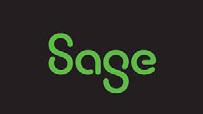
"
LEARN MORE
Designing better ways to work by providing cutting-edge products and exceptional experiences within HR, Talent, Time Management, Benefits and Payroll.
LEARN MORE
Paycom (NYSE:PAYC) offers cloud-based human capital management software to help businesses streamline employment processes, from recruitment to retirement. With a robust suite of products including payroll, time and labor management. ADVERTISE
US
LEARN MORE

